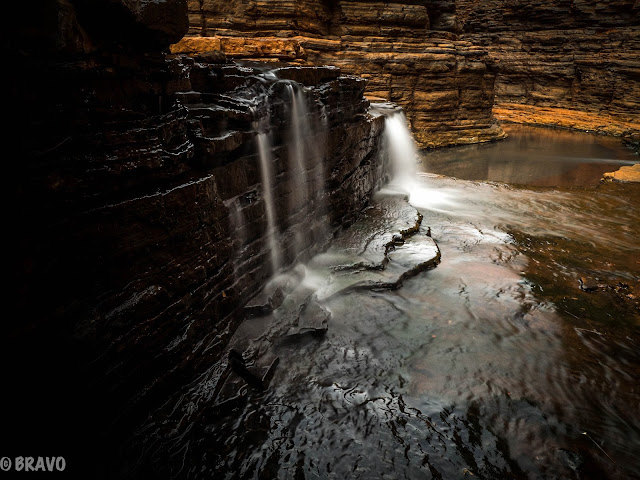Well, we know it's been a while since the last update. Sorry about that, we have been putting on some miles, and haven't really stopped in one place long enough to post. Our bad!!!
This post will just hit on some highlights of the last 3 months...... Big picture, we continued down the coast of WA to Perth, where we left Tojo at a friend of friends Don and Deb while we traveled to New Zealand to check on Bravo, then to Seattle for a quick Thanksgiving visit, and back to Perth, where we've resumed our land travels down the coast and will soon be in the desert again heading east. Here's a bit more shade and color, told mostly through photos......
Leaving the Pilbara, we headed west to the coast to explore the Exmouth area, home of the Cape Range National Park and the famous Ningaloo reef. The area is a World Heritage site, known for one of the longest fringing reefs in the world, providing great habitat for corals, mantas, whales, and other fishy critters. It was calling our names!!!
On the ride out, we did pass a couple of whales, oh well, maybe next time!!!
The boat was quickly able to put us into the water with mantas, as they use a spotting plane to find the rascals. After several runs with the rays, we were heading back to shore when the skipper spotted a huge loggerhead turtle.
 |
| Adam getting up close and personal with Mr. Loggerhead. |
Listed as endangered around the world, they're an uncommon species of turtle, at least in these waters, and we all jumped in to check him out. Fantastic to swim with the elder statesman, who's head was as big around as my leg.
 We then headed down to Cape Range, a stunning park within the Ningaloo Reef. Had a terrific time camping in sites on the beach and exploring the area for about a week.
We then headed down to Cape Range, a stunning park within the Ningaloo Reef. Had a terrific time camping in sites on the beach and exploring the area for about a week.  |
| Solving the world's problems with a bunch of fellow denizens of the reef. |
Turtle porn: One day this happy couple swept past our camp. No need to rush too fast for the camera, these characters know how to take their time.
Emus were a common sight in Exmouth, this one wandered past our downtown campsite.
After Exmouth we drove down to the little tourist town of Coral Bay, also within the Ningaloo Reef. Here we signed up for a couple of scuba dives with a local dive boat. Though due to the cooler water the coral was perhaps not quite as spectacular as that in Fiji and the other tropical places we've been, there was a good variety of fish and we saw some new (to us) species, such as a wobbegong shark, sailfin catfish, frog fish, and lots of different nudibranchs. The guides were great, and we had a terrific day. Nice to get out on and under the water again!!!
 The next big stop was Steep Point, the westernmost point of mainland Australia, accessible only by 4 wheel drive. The area is famous for its beach driving, cliffs, ship wrecks, and dramatic beach landscapes. It didn't disappoint !!!
The next big stop was Steep Point, the westernmost point of mainland Australia, accessible only by 4 wheel drive. The area is famous for its beach driving, cliffs, ship wrecks, and dramatic beach landscapes. It didn't disappoint !!!The cliffs are famous for radical rock fishing, yielding many record catches. It's radical indeed, with fisherman roping up with climbing gear to keep from falling in. Now and then, the sea claims another.....
 |
| Fishing anchorage spot |
 |
| Cliff at the point is apparently a popular fishing spot!!!!! |
 |
| Zuytdorp Cliffs, site of the wreck of the Zuytdorp, an 18th century trading ship of the Dutch East India Trading Company. |
 |
| The life ring seemed a bit of a joke, given the likelihood of a rescue's happy outcome up the cliffs. |
 |
| The beach went on for miles |
Staying in the Shark Bay area, we headed up the 4wd tracks to Cape Peron and the Francois Peron National Park for a few days. The whole Shark Bay area was full of great hiking and interesting sites to explore, such as this huge colony of cormorants.
 |
| Shell beach.....the entire beach is made up not of sand, but of billions of tiny, fingernail sized shells |
 |
| The shells formed a dense conglomeration used by the early settlers of the area as building blocks. This was a typical quarry. |
 |
| Boardwalk at Hamelin Bay |
We headed south to the surf town of Kalbarri and the Kalbarri National Park. Great surfing in the area!!!
The road passed by this whacky pink lake.....apparently made pink by algae, and hosting a commercial harvest industry of tiny brine shrimp. (Wondered where those "sea monkeys" of comic book and Southpark fame came from??? Thought so.....)
At last we arrived at the outskirts of Perth, and found a classic little park, Yanchep National Park, which allowed camping. Great critters, with wild kangaroos hopping around the campsite, and a recovery center for injured koala bears. Nice way to wrap up this leg of the trip!
 |
| Awwwwwww....... |
 |
| Mama roo w/ joey. The little guy looks like he's about ready to start university!!! |
Koalas can be nasty.....we didn't want to mess with this bad boy!!!
So let's call this a wrap on Part One of the WA Coast so we can get something posted. Will try to pick it up shortly, as we continue south of Perth. Lots more to come, so stay tuned!!! Happy holidays to all, or "Happy Chrissie", as a proper Aussie would say!!!
























































































